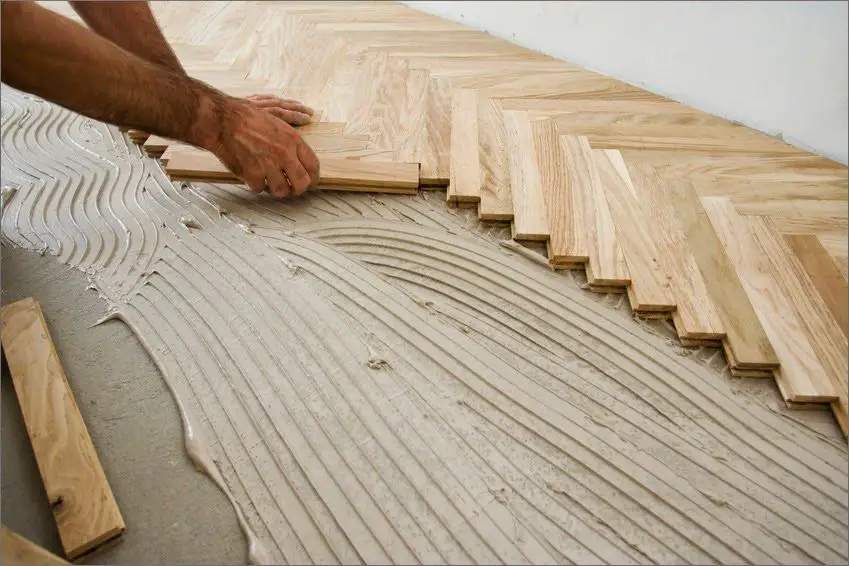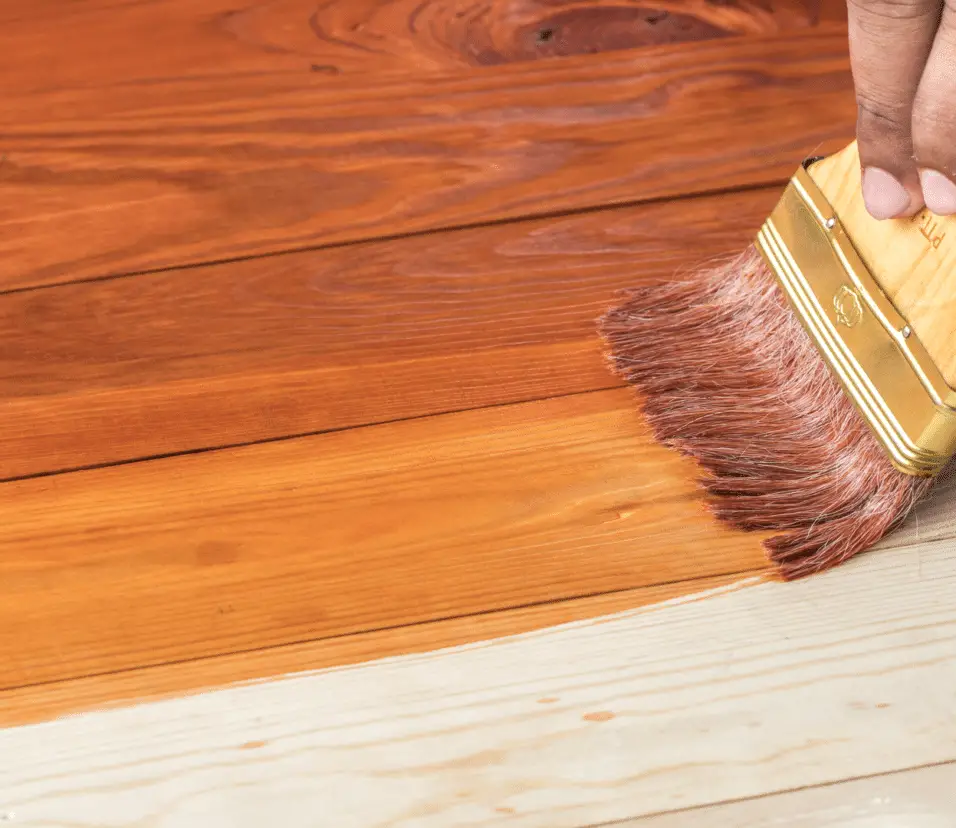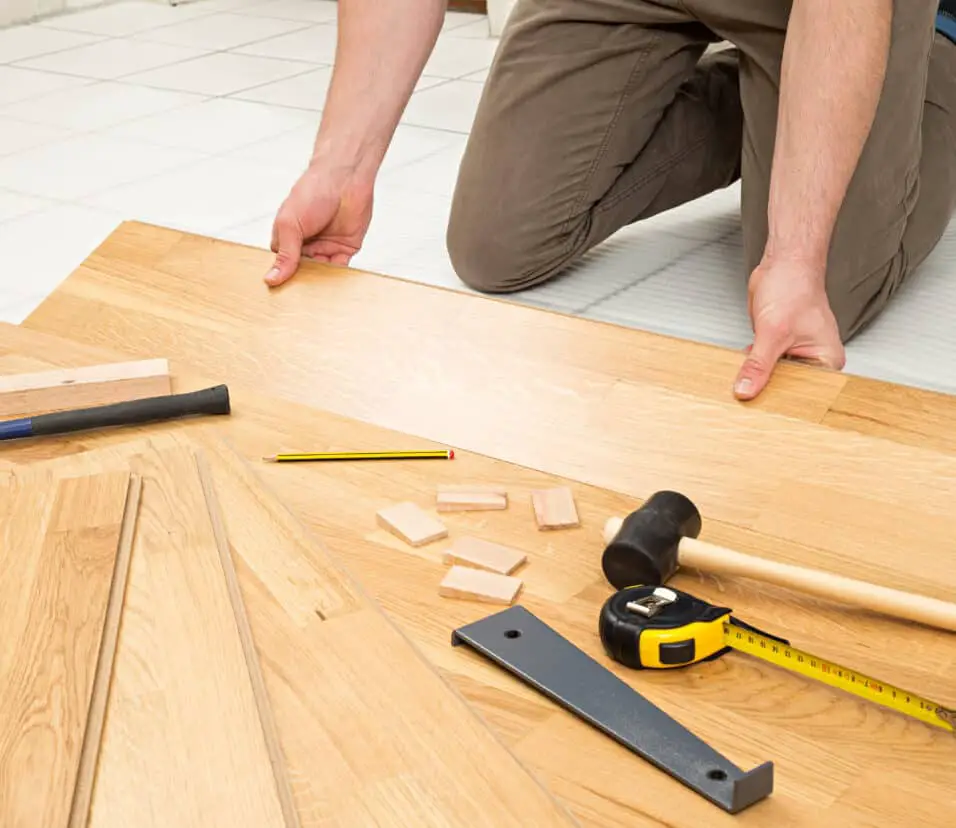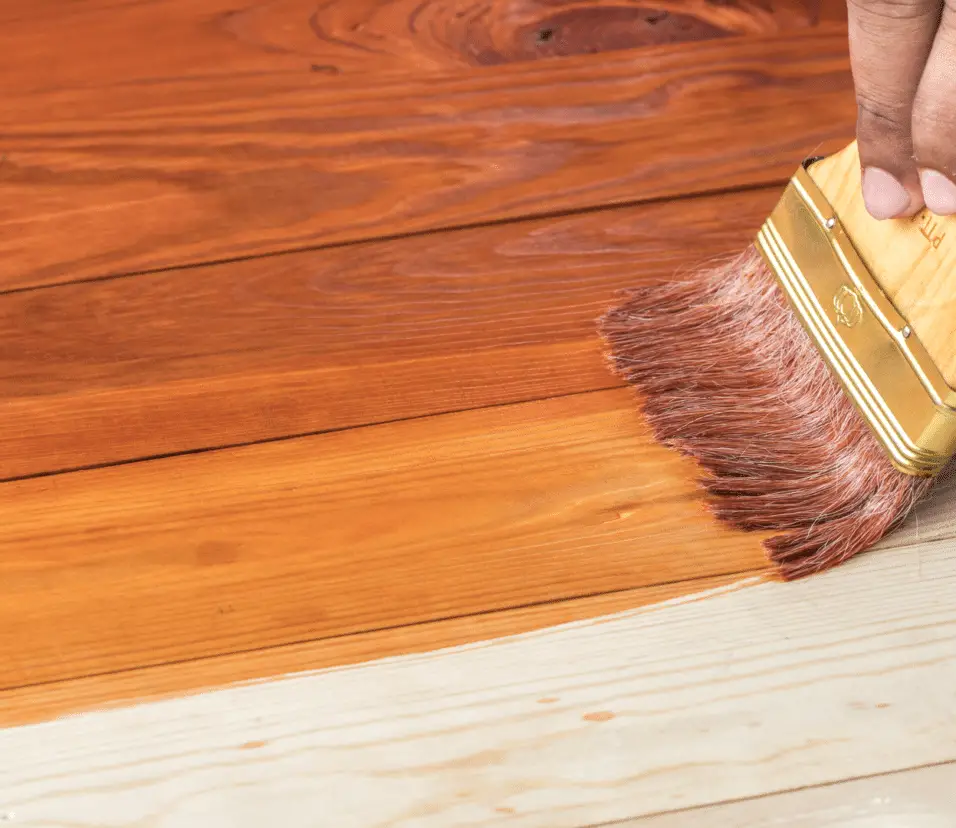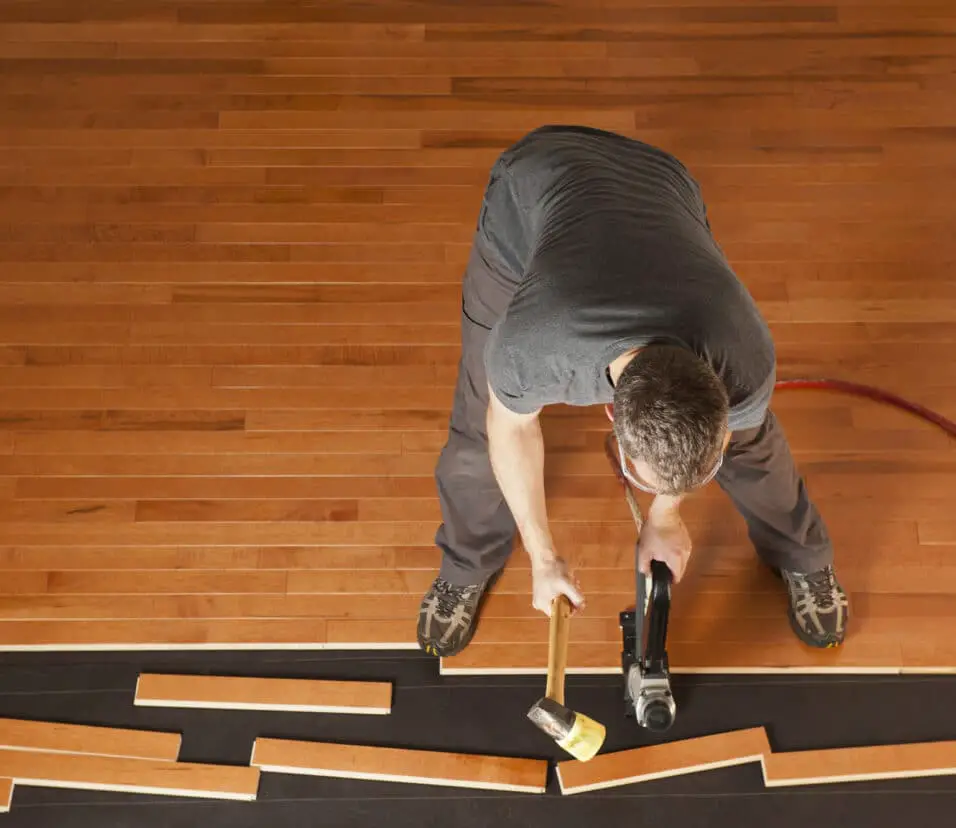How To Fill Gaps In Wood Flooring
Introduction
How To Fill Gaps In Wood Flooring: Wood flooring adds warmth and elegance to any space, but over time, it may develop gaps due to natural expansion and contraction of the wood. These gaps, while not uncommon, can be a cause for concern, affecting both the appearance and functionality of the floor. Filling gaps in wood flooring is a simple process that can be completed with the correct materials and techniques.
This comprehensive guide aims to provide homeowners and DIY enthusiasts with step-by-step instructions on how to effectively fill gaps in wood flooring. First, it delves into the reasons behind the appearance of gaps, emphasizing the impact of seasonal changes and fluctuations in humidity on wooden materials. Understanding the underlying causes is crucial as it helps homeowners take preventive measures to minimize gap formation in the future.
The introduction of this guide also outlines the types of gaps that are considered problematic and require attention. By clearly defining the size threshold that merits intervention, readers can distinguish between normal, acceptable gaps and those that demand filling for structural integrity and visual appeal.
The essential materials required for gap filling. From wood fillers and putty to epoxy resins, readers will become familiar with the various options available, enabling them to make informed decisions based on their specific wood floor and gap characteristics. Additionally, the guide explores the possibility of creating DIY fillers using common household items such as sawdust and glue, catering to readers who prefer more economical and accessible solutions.
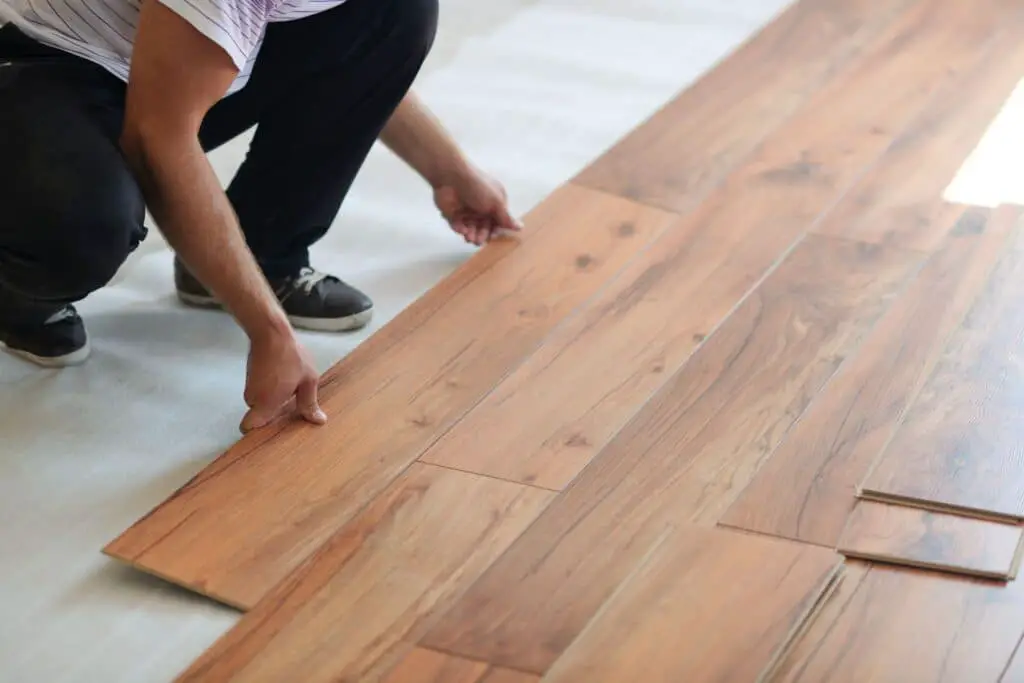
What Do You Fill Gaps In Wood Floors?
Ordinarily, you can “fill” the gaps with wood filler, putty, or with pieces of rope and then finish with stain to match the floor. The latter is an older method of filling gaps, and not only serves as a way to fix floor gaps, but also will help keep any drafts that come up through the floor to a minimum as well.
Filling gaps in wood floors is a crucial maintenance step that helps preserve the structural integrity and visual appeal of the flooring. When left untreated, gaps can accumulate dirt and debris, become potential tripping hazards, and even lead to more significant problems if moisture seeps into the gaps. To address these issues, various materials are used to fill the gaps effectively.
The primary materials used for filling gaps in wood floors are wood fillers, wood putty, and epoxy resin. Wood fillers and putty are widely available and come in different colors to match various wood species, making them an ideal choice for most gap-filling needs. They are typically composed of a mixture of wood particles, binders, and additives that create a pliable and easy-to-work-with compound. These fillers adhere well to wood surfaces and are relatively simple to apply using a putty knife. Once dried, they can be sanded to achieve a smooth finish that blends seamlessly with the surrounding wood.
Epoxy resin is another popular option for filling larger gaps or gaps in high-traffic areas. It consists of two components – resin and hardener – that need to be mixed before application. Epoxy is incredibly durable and can withstand heavy use and foot traffic, making it suitable for busy areas like hallways and entrances. However, working with epoxy requires careful attention to mixing ratios and working quickly, as it sets rapidly.
Can You Fill Gaps In Wooden Floors?
Try Wood Putty or Filler
Wood putty is a good tool to use if you want to save time and if you have a bunch of small gaps. You can make your own wood filler, or you can buy a putty from a store. Clean your floorboards first with a dampened cloth, removing any dust or chips. Put a little wood putty into the gap.
Over time, wooden floors can develop gaps due to a variety of factors, such as seasonal changes in humidity, age-related shrinkage, or improper installation. These gaps not only detract from the flooring’s aesthetic appeal but can also accumulate dirt and debris, leading to potential tripping hazards and possible damage if moisture seeps into the gaps.
To address these issues, various methods and materials are available for filling gaps in wooden floors. Wood fillers and wood putty are commonly used for smaller gaps. These products come in different colors to match various wood species, ensuring a seamless and aesthetically pleasing finish. They are easy to apply using a putty knife, and once dried, can be sanded down to create a smooth and even surface.
For larger gaps or gaps in high-traffic areas, epoxy resin is a more durable and robust option. Epoxy consists of two components, resin, and hardener, which are mixed before application. It sets quickly and can withstand heavy use and foot traffic, making it ideal for areas that experience a lot of activity.
What Is The Best Gap Filler For Floor Boards?
General wood fillers can crack and fall into the gaps over time. We recommend Bona Gap Master or Osmo Interior Gap Sealer. Both fillers are ideal for sealing gaps between floor boards prior to sanding and finishing.
Selecting the best gap filler for floor boards depends on various factors, including the size of the gaps, the type of wood flooring, and the specific requirements of the project. Several options are available, each with its advantages and suitability for different situations.
Wood Fillers and Putty
Wood fillers and putty are versatile and commonly used for filling small to medium-sized gaps in floor boards. They are available in various colors to match different wood species, ensuring a seamless blend with the surrounding floor. Wood fillers and putty are easy to apply and can be sanded smooth after drying. They are ideal for most standard gap-filling needs and offer a cost-effective solution.
Epoxy Resin
For larger gaps or gaps in high-traffic areas, epoxy resin is a durable and long-lasting option. It consists of two components, resin and hardener, which are mixed before application. Epoxy sets quickly and creates a strong bond with the wood, making it suitable for busy areas prone to heavy foot traffic. However, working with epoxy requires precise mixing and quick application, as it can harden rapidly.
Wood Shims
Wood shims are tiny, wedge-shaped pieces of wood used to close gaps between floor planks. They are best for uneven gaps or a natural look. Wood shims are versatile and easy to use because they can be trimmed.
Sawdust and Glue Mixture
For a DIY and budget-friendly option, a homemade filler can be created by combining fine sawdust from the same wood species with wood glue. While not as durable or visually seamless as commercial fillers, this mixture can be effective for small gaps and temporary solutions.
Rope or Cord Filler
Rope or cord fillers are often used for wider gaps, especially in rustic or farmhouse-style flooring. Made of natural materials like jute or hemp, they can add character and charm to the floor while filling the gaps effectively.
What do builders use to fill gaps?
Caulk: Generally made of flexible acrylic, mastic caulk has a smooth plastic type texture. Best used for filling gaps between skirting boards, doorframes or the edges of shelves and the wall.
Builders use a variety of materials to fill gaps, depending on the type of construction, the specific application, and the size of the gaps. These gap-filling materials serve essential functions, such as improving aesthetics, enhancing structural integrity, and providing insulation or moisture resistance. Some of the common materials used by builders to fill gaps include:
Caulk
Builders frequently use caulk for filling gaps in various building components, such as windows, doors, baseboards, and trim. Caulk is a flexible, waterproof sealant that comes in various formulations, including silicone, latex, and polyurethane. It is ideal for small to medium-sized gaps and offers excellent adhesion to a wide range of materials.
Expanding Foam Sealant
Expanding foam sealant is suitable for filling larger gaps, especially in wall cavities, around pipes, and in gaps between building materials. When applied, the foam expands to fill voids, providing an airtight and insulating seal.
Wood Filler and Putty
For wooden structures, builders use wood filler and putty to fill gaps in wood floors, cabinets, furniture, and moldings. Wood fillers are available in different colors to match various wood species, offering a seamless blend with the surrounding wood.
Grout
In tile installations, builders use grout to fill gaps between tiles. Grout is a cement-based material that provides a durable, waterproof, and aesthetically pleasing finish.
Plaster or Joint Compound
Builders use plaster or joint compound to fill gaps and imperfections in drywall and gypsum board installations. The use of these materials results in a uniform surface that is ready for finishing or painting.
Acoustic Sealants
In soundproofing applications, builders use acoustic sealants to fill gaps and joints between building materials, reducing sound transmission between spaces.
Concrete Patching Compound
For concrete structures, builders use concrete patching compounds to fill cracks and gaps, restoring the integrity and appearance of the surface.
Cementitious Grout
In masonry work, builders use cementitious grout to fill gaps between bricks or stone blocks, providing stability and weatherproofing.
Backer Rods
Backer rods, made of foam or rubber, are used to fill large gaps before applying sealants or caulks, ensuring proper adhesion and minimizing material wastage.
What Foam Is Used To Fill Gaps?
GREAT STUFF Big Gap Filler Insulating Foam Sealant is an expanding foam sealant that fills, seals and insulates gaps up to 3 inches.
Expanding foam sealants are available in two main types: one-component and two-component foam. One-component foam comes in aerosol cans and is ready to use straight from the can. It expands and cures upon exposure to air, making it convenient for small-scale gap filling projects. Two-component foam, on the other hand, involves the mixing of two separate components (usually resin and a curing agent) to initiate the expansion process.
The foam’s expansion ability is a key advantage, allowing it to fill irregular and hard-to-reach gaps in various building components. It adheres well to a wide range of materials, including wood, metal, concrete, plastic, and even some fabrics. This makes it suitable for filling gaps around windows, doors, pipes, electrical outlets, and gaps in walls, ceilings, and floors.
How Do I Prepare The Gaps Before Filling Them?
Preparing the gaps before filling them is a crucial step to ensure the effectiveness and longevity of the gap-filling process. Proper preparation ensures that the filler adheres well to the surfaces and creates a seamless finish. Here are the essential steps to prepare the gaps before filling them:
Clean the Gaps
Start by cleaning the gaps thoroughly. Remove any dirt, debris, or old filler residues from the gaps.
Inspect for Loose Boards
Check the wood flooring around the gaps for any loose or damaged boards. If you find any, secure them back into place using nails or screws to ensure a stable foundation for the gap filler.
Smooth the Gap Edges
If the gaps have rough or uneven edges, use sandpaper to smooth them out. A smooth surface will help the filler adhere better and create a more even finish.
Determine Gap Size
Assess the size of the gaps to determine the most appropriate filler material. For smaller gaps, wood fillers or putty may suffice, while larger gaps may require epoxy resin or other specialized gap-filling products.
Match Filler Color
If using wood fillers or putty, select a color that closely matches the wood flooring to achieve a seamless blend. Many fillers come in various wood tones to match different wood species.
Read Manufacturer’s Instructions
Before applying the filler, carefully read and follow the manufacturer’s instructions.
Protect Surrounding Areas
To prevent expanding foam or other gap fillers from spreading, cover nearby areas with masking tape or painter’s tape.
Apply the Filler
Use a putty knife or applicator recommended for the chosen filler material to apply it evenly into the gaps.
Remove Excess Filler
Wipe off any excess filler from the surface using a clean cloth or a putty knife. Removing excess filler before it dries will result in a neater finish.
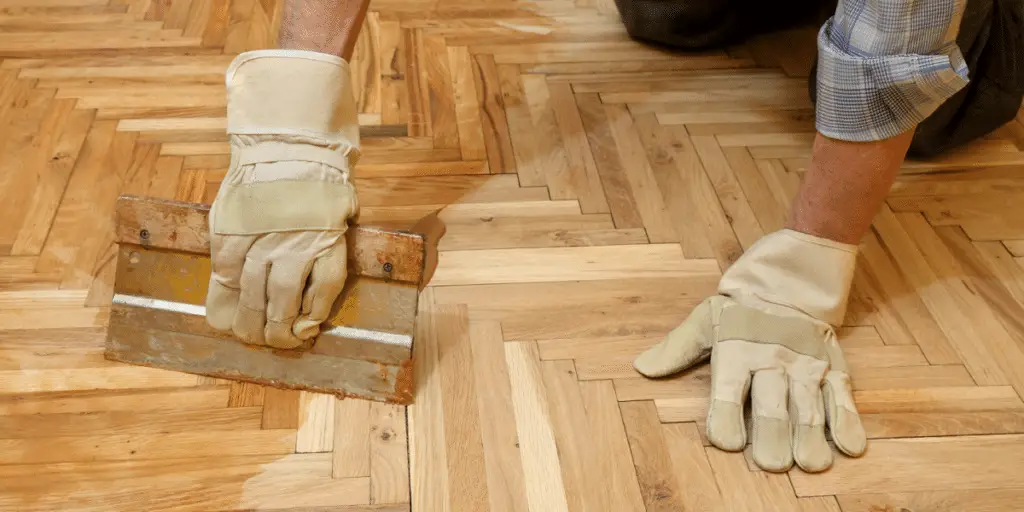
What materials do I need to fill the gaps?
To fill the gaps in wood flooring effectively, you will need specific materials designed for gap-filling purposes. Gap-filling materials depend on gap size and type, but the following are essential:
Wood Filler or Wood Putty: They come in various colors to match different wood species, ensuring a seamless and aesthetically pleasing finish.
Epoxy Resin: Epoxy resin fills greater gaps in high-traffic areas and lasts longer. Epoxy requires mixing resin and hardener.For high-traffic areas, it dries quickly.
Putty Knife or Applicator: A putty knife or an applicator is essential for applying the filler material into the gaps.
Sandpaper: Sandpaper is necessary to smooth out any rough or uneven edges around the gaps and to create a level surface after applying the filler. Sanding also helps in achieving a seamless integration of the filled gaps with the rest of the wood flooring.
Clean Cloth or Sponge: A clean cloth or sponge is useful for wiping off any excess filler from the surface before it dries. Removing excess filler ensures a neat and tidy finish.
Masking Tape (optional): Masking tape can protect neighboring surfaces from expanding foam or other gap fillers.
Vacuum Cleaner or Soft Brush: Before applying the filler, it is essential to clean the gaps thoroughly.
How Do I Maintain The Wood Flooring After Filling The Gaps?
Maintaining wood flooring after filling the gaps is essential to preserve its beauty and longevity. While gap filling addresses immediate concerns, ongoing care ensures the floor remains in excellent condition and prevents new gaps from forming. Here are some essential tips for maintaining wood flooring after filling the gaps:
Regular Cleaning
Adopt a regular cleaning routine to keep the wood flooring free from dust, dirt, and debris. Use a soft broom or vacuum with a soft brush attachment to avoid scratching the surface. Clean up spills immediately to prevent moisture from seeping into the gaps.
Avoid Excessive Moisture
Wood is sensitive to moisture, so avoid wet mopping or using excessive water during cleaning.
Maintain Consistent Humidity
Fluctuations in humidity levels can cause wood to expand and contract, leading to gaps over time. To minimize this, maintain a consistent indoor humidity level, ideally between 30% to 50%, using a humidifier or dehumidifier as needed.
Protect from Furniture Scratches
Place protective felt pads or furniture glides under furniture legs to prevent scratches and dents on the wood flooring when moving furniture.
Use Rugs and Mats
Place rugs or mats in high-traffic areas, especially near entryways and in front of sinks, to minimize wear and tear on the wood flooring.
Trim Pet Nails
Keep your pets’ nails trimmed to avoid scratches on the wood surface.
Reapply Finish as Needed
Over time, the protective finish on the wood flooring may wear off. Consider reapplying a fresh coat of finish every few years to enhance protection and maintain the floor’s appearance.
Inspect for New Gaps
Regularly inspect the wood flooring for new gaps or signs of movement. Address any gaps promptly by refilling them with appropriate filler materials.

Conclusion
Gaps in wood flooring are a common occurrence due to natural expansion and contraction, seasonal changes, and varying humidity levels. Fortunately, several effective methods and materials are available for filling gaps, catering to different gap sizes and specific wood species.
Wood fillers and putties are go-to options for smaller gaps, offering a wide range of colors to match various wood types and providing a seamless, aesthetically pleasing finish. For larger gaps or areas subject to heavy use, epoxy resin proves to be a durable and robust choice, ensuring long-lasting results.
The process of filling gaps requires proper preparation, including cleaning the gaps, smoothing edges, and matching filler colors to the wood flooring. Following manufacturer instructions and choosing the appropriate filler material for the gap size is vital for achieving the best outcomes.
With a well-prepared surface, the chosen gap filler can be applied using a putty knife or an appropriate applicator, ensuring a complete and thorough filling process. Post-application, allowing adequate drying time and avoiding premature foot traffic are crucial to ensure the filler sets properly and remains durable over time.



